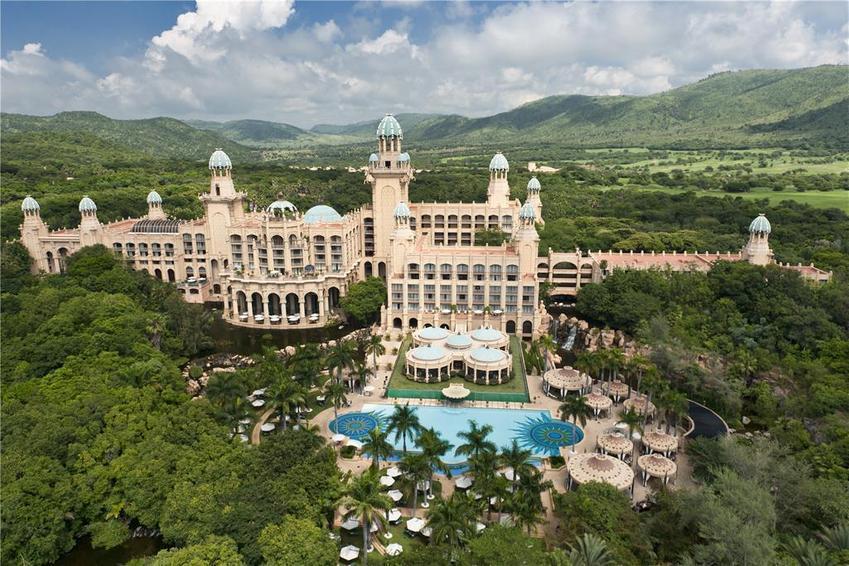Sun City news

Sun City is going to great heights in its bid to one day take the resort completely off the grid.
With all available space on the roof of Sun Central now covered by solar panels, the resort lifted its sights to the roof at The Palace, and the Sun City hotel.
Brett Hoppé, General Manager of Sun City said, “Conventional installation methods such as cranes would have inconvenienced our guests, so given the scale of the project, we decided that airlifting the equipment was the best and quickest solution. At its highest point The Palace is 70m high, so lifting 1 193 solar panels and the supporting steel structures onto the roof is no mean feat. The hefty panels were packed into crates, with each one weighing just under a ton.”
Hoppé emphasised that the roll out of the panels forms part of a broader, phased environmental strategy that will, in the future, take the resort off the grid. "Sun City is an enormous property with many moving parts to power up, but we believe our ground-breaking project not only reduces our Resort’s demand and consumption of energy, but that it will also meet Sun International’s broader environmental commitment.
“Our sustainability promise is based on people, planet and profits, in that order. Solar is beneficial to our broader community as the less power we draw from the grid the more is available to others, it works for our guests – especially those travelling from overseas - as they want to know that they are not increasing their own environmental footprint when they stay at Sun City, and it works for our own bottom line. Since June last year we have completed the first two phases of the project and have already realised a financial saving of approximately R3.1-million.
CAPTION: Solar panels being airlifted onto the roof of The Palace, and view of the helicopter from Sun Central’s roof and its solar panels already installed
The installation has been planned in several phases. When this particular phase has been completed, demand from the resort on the national grid will drop by an estimated total of 2.3 MW.
Sun City Sustainability Manager Lwazi Mswelanto highlighted the resort’s wider objectives: "Our sustainability agenda is focused on not only shrinking our environmental footprint, but also on uplifting our surrounding communities. We work closely with all partners to ensure that members of our doorstep communities are employed, trained and upskilled to service the technology during the building, and after completion of the project. Sun City currently employs 18 locals through our solar project. For us it is critical to be able to give back to our community.”
Senior Operations Engineer at Tsebo Energy Solutions, TM Lesetla, highlights the current progress: "We are now in Phase 3 of our solar plant installation. This phase will add an additional 690 kWp, increasing our total to nearly 4,000 solar panels installed across the resort." As of 10 June 2024, Sun City has already saved and produced a total of 2 203 886.97 kWh, and avoided 1976.5 tons CO2e.
The project showcases a meticulously planned approach, having secured approvals from Sun City's management and aligned with stringent health and safety standards. "The planning phase, which took about two months, was critical in minimising risk and disruption to Sun City's operations, ensuring the safety of both guests and the structural integrity of the buildings," TM Lesetla added.
This extensive preparation included stakeholder engagement with various department heads within Sun City, ensuring that every aspect of the project adhered to both the national Occupational Health and Safety Act and internal safety protocols.
This innovative approach not only protects the architectural heritage of the resort but also aligns with Sun City’s commitment to sustainable and responsible energy solutions. This solar plant installation not only marks a significant technological advancement but also represents the strong partnership between Sun City and Tsebo Energy Solutions, setting a new standard for integrating renewable energy solutions in heritage-sensitive environments.

